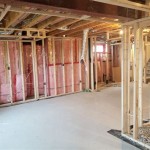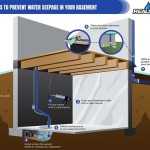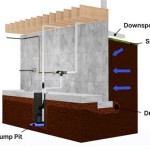How Much Basement Wall Bowing Is Acceptable?
Basement wall bowing is a common problem that can occur in homes of all ages. It is caused by the pressure of the soil around the foundation, which can push the walls inward. While some bowing is normal, excessive bowing can be a sign of a more serious problem. So, how much basement wall bowing is acceptable?
The answer to this question depends on several factors, including the age of the home, the type of soil, and the amount of moisture in the soil. In general, however basement wall bowing of more than 1 inch is considered excessive and should be repaired.
There are several ways to repair bowing basement walls, including:
- Installing wall anchors
- Installing helical piers
- Installing carbon fiber straps
The best repair method for your home will depend on the specific cause of the bowing. A qualified foundation contractor can assess your home and recommend the best course of action.
If you are concerned about basement wall bowing, it is important to have it inspected by a qualified foundation contractor. Early detection and repair can help to prevent more serious problems down the road.
Causes of Basement Wall Bowing
There are several factors that can contribute to basement wall bowing, including:
- Hydrostatic pressure: This is the pressure exerted by water against the foundation walls. Hydrostatic pressure can be caused by heavy rains, flooding, or a high water table.
- Soil pressure: The weight of the soil around the foundation can also cause the walls to bow inward.
- Frost heave: When water in the soil freezes, it expands. This expansion can put pressure on the foundation walls and cause them to bow.
- Tree roots: Tree roots can grow into the foundation and cause the walls to bow.
- Poor drainage: If the soil around the foundation is not properly drained, it can lead to hydrostatic pressure and basement wall bowing.
Signs of Basement Wall Bowing
There are several signs that may indicate basement wall bowing, including:
- Cracks in the walls
- Bowing or bulging walls
- Doors or windows that are difficult to open or close
- Water seepage in the basement
- Foundation settlement
If you notice any of these signs, it is important to have your basement inspected by a qualified foundation contractor.
Preventing Basement Wall Bowing
There are several things you can do to help prevent basement wall bowing, including:
- Properly grading the soil around your home: This will help to direct water away from the foundation.
- Installing a drainage system: A drainage system can help to remove water from the soil around your foundation.
- Planting trees and shrubs away from your home: This will help to prevent tree roots from damaging the foundation.
- Keeping your gutters and downspouts clean: This will help to prevent water from pooling around your foundation.
By following these tips, you can help to prevent basement wall bowing and protect your home.

Bowing Walls Milwaee Dma Everdry Waterproofing

2024 Bowing Basement Wall Repair Cost

Bowing Foundation Wall Repairs In Wisconsin Buckling Walls Repair Contractors Green Bay Appleton Oshkosh Wi

Gorilla Wall Braces By Resch Enterprises Inc Family Owned Since 1967

2024 Bowing Basement Wall Repair Cost

Wall Straightening Overland Park And Kansas City Foundation 1

Bowing Walls How To Fix And Repair Cost Epp Foundation

How Bowed Basement Walls Can Get Worse Groundworks

How Much Foundation Movement Is Acceptable Professionals Of Florida

Repairing Bowing Basement Walls Csg Renovation
See Also








